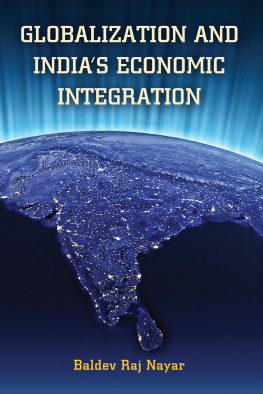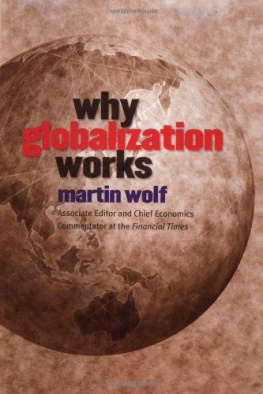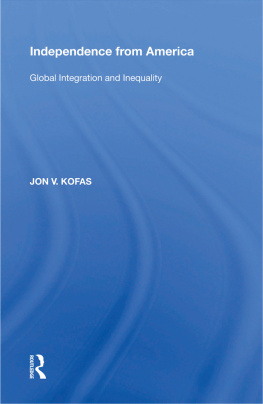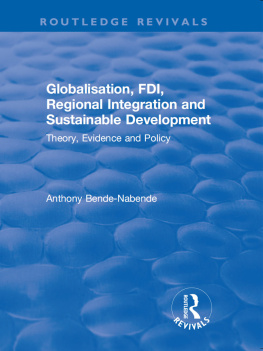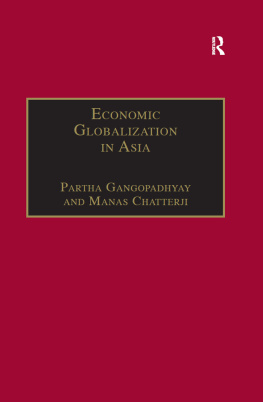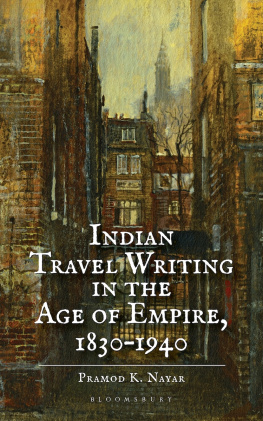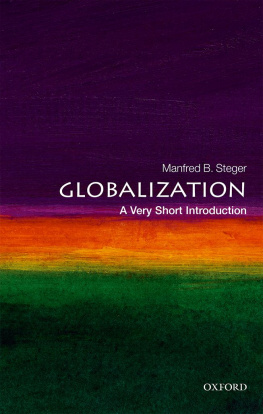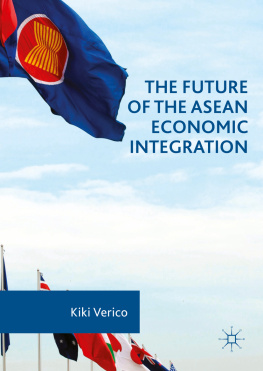GLOBALIZATION AND INDIAS ECONOMIC INTEGRATION
SOUTH ASIA IN WORLD AFFAIRS SERIES
T. V. Paul, Series Editor
EDITORIAL ADVISORY BOARD
Rajesh Basrur
Maya Chadda
Stephen P. Cohen
C. Christine Fair
Timothy Hoyt
Paul Kapur
Rajesh Rajagopalan
Aseema Sinha
TITLES IN THE SERIES
Afghan Endgames: Strategy and Policy Choices for Americas Longest War
Hy Rothstein and John Arquilla, Editors
The Engagement of India: Strategies and Responses
Ian Hall, Editor
Globalization and Indias Economic Integration
Baldev Raj Nayar
Pakistans Counterterrorism Challenge
Moeed Yusuf, Editor
Vying for Allahs Vote: Understanding Islamic Parties, Political Violence, and Extremism in Pakistan
Haroon K. Ullah
2014 Georgetown University Press. All rights reserved. No part of this book may be reproduced or utilized in any form or by any means, electronic or mechanical, including photocopying and recording, or by any information storage and retrieval system, without permission in writing from the publisher.
Library of Congress Cataloging-in-Publication Data
Nayar, Baldev Raj.
Globalization and Indias Economic Integration / Baldev Raj Nayar.
pages cm. (South Asia in world affairs series)
Includes bibliographical references and index.
ISBN 978-1-62616-107-8 (hardcover : alk. paper)
1. IndiaEconomic policy19912. IndiaEconomic integration.
3. Globalization. I. Title.
|
|---|
HC435.3.N393 2014 |
330.954dc23 | 2013046834 |
Cover design: Bruce Gore
Cover photo: iStock Photo/Getty Images
This book is printed on acid-free paper meeting the requirements of the American National Standard for Permanence in Paper for Printed Library Materials.
15 14 13 9 8 7 6 5 4 3 2 First printing
Printed in the United States of America
PREFACE
Globalization has been the elemental economic force across the globe since at least the last quarter of the twentieth century and, as a consequence, has also become the overarching paradigm in the study of human affairs in the contemporary world. By the same token, all kinds of both ills and blessings have been ascribed to it. The subject may have lost some of its luster in the wake of the global meltdown in 2008, but despite the consequent enormous turmoil, the striking feature of that event has been the lack of resort by nation-states to reverse the onward march of globalization through protectionism. Once the world economy recovers from the aftermath of the meltdown, the omens therefore seem propitious for globalization to resume its course.
The present study on Indias political economy deals with but one aspect of the manifold critique about the malign effects of globalizationthat is, its alleged impact by way of segmentation of the national economy, leading inexorably, as it were, to economic and even national disintegration. This study, however, takes an agnostic view of the critique, with the principal reservation being that it ignores the role of the state in managingpoorly or effectivelythe impact of globalization, even as its understanding of the impact of markets is partial or incomplete. While there exists a strong temptation to ascribe mankinds multifarious ills to globalization, it cannot be stressed enough that globalization is not a single-variable process but a metasocial phenomenon that harbors many trends and countertrends. Globalization has both negative and positive consequences for the national economy, and the challenge for decision makers is to minimize the former and maximize the latter. There is thus no predestination foretold in globalization about the final outcome on economic integration and disintegration.
The critique of globalization and some of the reservations about it are elaborated in of the study as a backdrop for parts II and III, which examine, respectively, the role both of state policies and market processes in relation to economic integration subsequent to economic liberalization.
deals with economic planning, which many critics had feared would come to an end with the turn to the market when the policy of economic liberalization was launched. It is true that economic planning does not have the same salience today that it once had, say, at the time of the Second Five Year Plan or the Third Five Year Plan, but then it had already lost such salience following the agricultural and food crisis after the end of the Third Plan. Still, the Planning Commission largely continues to perform the same functions that it did prior to economic liberalization. True, those functions have undergone some change, as ought to be expected given the increased role of the market, but the Planning Commission has shown considerable flexibility in addressing contemporary postliberalization challenges. The chapter delineates three possible futures for the Planning Commission and endorses its continuance, particularly since it performs an essential integrative function for Indias continental-size economy.
Alongside the Planning Commission, the Finance Commission is another critical integrative institution in Indias federal system. discusses the remarkable capacity of the Finance Commission to cope with postliberalization challenges. Particularly noteworthy are its taking on the new function of determining the road map to assure fiscal consolidation throughout the federationmaking that now the new core task of the commissionbesides rationalizing and modernizing the vertical and horizontal distribution of national revenues that earlier constituted its core function. This chapter constitutes an extensive but critical case study of fiscal federalism, which lies at the heart of the relations between the center and states in Indias political structure.
demonstrates both the continued relevance of the state as a key actor in the effort to assure economic integration and also the presence of integration-enabling impulses within globalization itself.
is concerned with the area of trade, which has seen considerable expansion in the postliberalization period, both externally and internally. Whether the expansion of internal trade is largely a function of domestic growth or merely a reflection of the advance in external trade cannot be proven incontrovertibly for the simple reason that there are no separate data for purely internal trade. By using a proxy variable, however, the chapter shows that expanded postliberalization internal trade tends to advance economic integration rather than segmentation. It also demonstrates that flows of trade, along with those of investment and labor, tend to favor diffusion of economic growth across states rather than economic polarization. At the same time, it also underlines the strong, state-made impedimentsin the form of the relative neglect of infrastructure and of excessive regulatory controlsto increased market-driven trade integration.
, dealing with flows of capital, focuses primarily on the diffusion of industry across the states. While much of the literature emphasizes the widening of industrial disparities between the states, this study raises some doubts about that proposition based on more recent data on industrial growth during 19992010, even as it questions (based on the same data) the proposition about the coastal states being the principal beneficiaries of postliberalization industrial growth. Contrary to the position of the critics of globalization, the evidence suggests diffusion in relation to industrial location.


